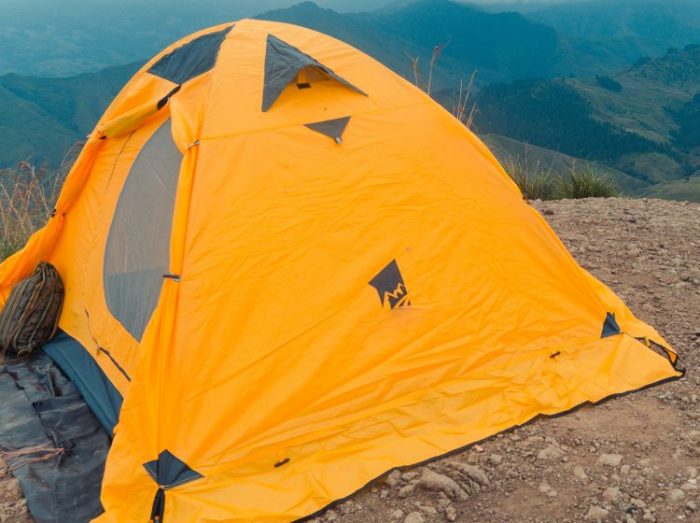Knowing how to seam seal a tent is a necessary skill. It’s a part of basic maintenance, and it is very likely that you will have to seam seal your tent. Several modern tents come with their seams sealed. It is, however, not an industry-standard practice. In fact, there’s a good chance a new tent will have to be seam sealed. Seam sealing is integral to knowing how to waterproof a tent. I bet you will need this skill if you camp with any regularity.
Preparations For Seam Sealing A Tent
The first thing I’d suggest for seam sealing is to set the tent up. A dry, sunny day is awesome. In case you’re running maintenance on an old tent, it is better to clean the tent first. Once you’re all set up, it’s time to get to work!
Get The Seam Sealant
Go inside your tent and start working with a seam sealant. They’re relatively cheap and you can get one for a few dollars. Coleman Seam Sealer is fairly popular, though there are many other brands available. You can see more sealers and reviews in my tent waterproofing guide.
I recommend checking with the tent manufacturer on the seam sealer type to use. Not all tent materials work with the same sealers, so take some time to ensure you’re using the right material.
Should I Use A Homemade Seam Sealer?
Many people suggest using homemade or organic seam sealers. I disagree. Organic isn’t the way to go. I’d rather have the tent leak than be smelly or a beacon for ants and critters.
If you have confidence in your ability to work with various chemicals and materials, sure go ahead and make your own seam sealer. I think buying one off the shelf is more convenient and with a small cost difference, but there isn’t anything wrong with whipping up your own seam sealer – with the right materials.
Applying The Seam Sealer
Shake the bottle, and start applying the seam sealer to all exposed seams of the tent. Most products come with an applicator cap to make the job easier, so put it to good use! If there’s no applicator, you can use a painter’s brush to do the job. For a cleaner, professional look, you can make use of a painter’s masking tape around the seams. It isn’t necessary, but be used for a better finish. Do not use duct tape.
Liberally apply the seam sealer, making sure it gets to every hole and thread on the seam. It’s a slow, deliberate movement rather than a fast stroke.
Fixing Tent Seam Tape Coming Off
This is a problem that will come up with tent maintenance. If the tent has tape-sealed seams for waterproofing, you may have to deal with tent seam tape coming off. Some tents use this as a waterproofing strategy, and it works great. But of course, tapes too need some maintenance.
Gently remove the section where the seam tape is coming loose. Make it a point to not disturb intact areas of the tape. Clean the area with rubbing alcohol, and apply seam sealer over the affected area.
Cover Tent Exteriors And Rainfly
Once the interiors are done, head on outside and repeat the sealing to the exterior of the tent. In case the rainfly has seams, it is worthwhile to apply sealant there as well.
Let it dry. It can take anywhere from 12-24 hours for seam sealers to completely dry.
Check Your Handiwork
Once the sealer has completely dried off, it is time to check your handiwork. Set off sprinklers for an hour or two, and enter the tent. Look for any leaks. In case you see leaks on any area of the seam, mark it. Let the tent dry, and reapply sealers to the marked areas.
Once you’re done, remember that the tent must be completely dry before you pack it away.
Seam Sealing A Tent The Right Way
Any tent will need maintenance over time. There’s a good chance that the brand new tent you bought will need seam sealing to be completely waterproof. Knowing how to seam seal a tent is an important skill for campers. It does take a lot of time, but the process itself is simple and easy.

